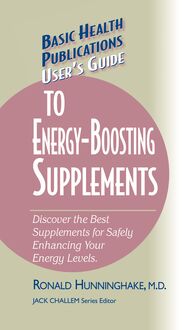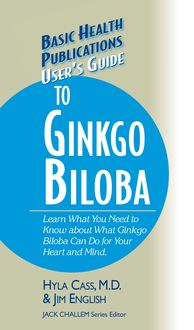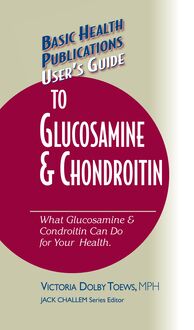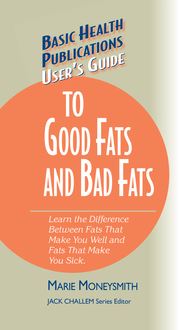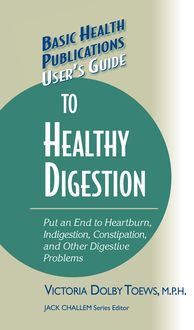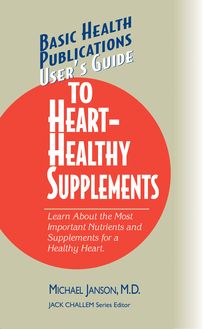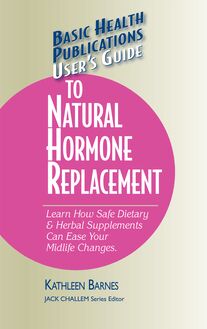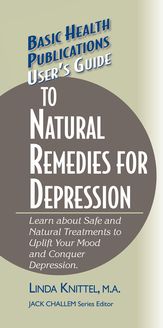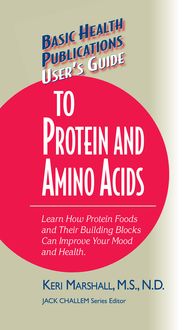-
 Univers
Univers
-
 Ebooks
Ebooks
-
 Livres audio
Livres audio
-
 Presse
Presse
-
 Podcasts
Podcasts
-
 BD
BD
-
 Documents
Documents
-
- Cours
- Révisions
- Ressources pédagogiques
- Sciences de l’éducation
- Manuels scolaires
- Langues
- Travaux de classe
- Annales de BEP
- Etudes supérieures
- Maternelle et primaire
- Fiches de lecture
- Orientation scolaire
- Méthodologie
- Corrigés de devoir
- Annales d’examens et concours
- Annales du bac
- Annales du brevet
- Rapports de stage
La lecture à portée de main
Vous pourrez modifier la taille du texte de cet ouvrage
Découvre YouScribe en t'inscrivant gratuitement
Je m'inscrisDécouvre YouScribe en t'inscrivant gratuitement
Je m'inscrisEn savoir plus
Vous pourrez modifier la taille du texte de cet ouvrage
En savoir plus

Description
Sujets
Informations
| Publié par | Turner Publishing Company |
| Date de parution | 01 janvier 2004 |
| Nombre de lectures | 0 |
| EAN13 | 9781591206637 |
| Langue | English |
| Poids de l'ouvrage | 1 Mo |
Informations légales : prix de location à la page 0,0298€. Cette information est donnée uniquement à titre indicatif conformément à la législation en vigueur.
Extrait
The information contained in this book is based upon the research and personal and professional experiences of the author. It is not intended as a substitute for consulting with your physician or other healthcare provider. Any attempt to diagnose and treat an illness should be done under the direction of a healthcare professional.
The publisher does not advocate the use of any particular healthcare protocol but believes the information in this book should be available to the public. The publisher and author are not responsible for any adverse effects or consequences resulting from the use of the suggestions, preparations, or procedures discussed in this book. Should the reader have any questions concerning the appropriateness of any procedures or preparations mentioned, the author and the publisher strongly suggest consulting a professional healthcare advisor.
Series Editor: Jack Challem Editor: Christopher Mariadason Typesetter: Gary A. Rosenberg Series Cover Designer: Mike Stromberg
Basic Health Publications User’s Guides are published by Basic Health Publications, Inc.
8200 Boulevard East North Bergen, NJ 07047 1-800-575-8890
Copyright © 2004 by Hyla Cass, M.D.
ISBN 13: 978-1-59120-663-7
ISBN: 1-59120-088-1
All rights reserved. No part of this publication may be reproduced, stored in a retrieval system, or transmitted, in any form or by any means, electronic, mechanical, photocopying, recording, or otherwise, without the prior written consent of the copyright owner.
Printed in the United States of America
10 9 8 7 6 5 4 3 2 1
C ONTENTS
Introduction
1. Herbal Medicine: From Folklore to Science
2. Echinacea—Immune Enhancer
3. Garlic—Cardiovascular and Immune-System Booster
4. Ginkgo—Memory and Circulation Enhancer
5. Ginseng and Eleuthero—Energizers
6. Rhodiola Rosea —Adaptogen
7. Turmeric—Nature’s Anti-inflammatory
8. Milk Thistle—Liver Supporter
9. St. John’s Wort—Mood Stabilizer
10. Saw Palmetto—Promoter of Prostate Health
11. How to Buy and Use Herbal Medicines
Conclusion
References
Other Books and Resources
I NTRODUCTION
P eople in every culture and every country have been using herbs as natural remedies for thousands of years. Safe and effective, herbs have passed the test of time and have helped millions of people maintain or recover their health. Today, they are being used by increasing numbers of people seeking natural alternatives to synthetic and often hazardous drugs.
It may seem strange that modern drugs can be replaced with grandma’s teas, powders, and tinctures. But extensive scientific evidence supports the use of herbal medicines, and many modern drugs are actually synthetic versions of substances found in plants. In the United States, the medical profession is slowly beginning to catch on to this, despite having dismissed the value of herbs in the past, preferring to prescribe expensive drugs instead. In contrast, European doctors have always maintained their interest and skill in prescribing herbal medicines, or phytomedicines, in conjunction with pharmaceuticals. Europe has a stronger history of herb use compared with the United States, and, not surprisingly, most of the scientific research on herbs has been conducted there.
Why use herbs instead of synthetic medications? The fact is, herbs possess many properties that make them superior to synthetic drugs in many ways, including being more in tune with the body and, therefore, creating fewer, and certainly less harmful, side effects. Moreover, most herbs have multiple uses, bestowing side benefits instead of side effects. For example, ginkgo not only improves memory, but can also boost blood circulation to the arms and legs. And garlic not only enhances the immune system, but lowers cholesterol as well. In addition, many herbs fulfill roles that drugs cannot. To wit, milk thistle, when administered early enough, can protect the liver from mushroom poisoning. And the whole range of adaptogens have no equivalent in the world of conventional medication.
Herbs are also appealing in that they can be purchased without a prescription, are relatively inexpensive, and are quite safe when used as directed. In this User’s Guide to Herbal Remedies, you will learn what herbs are, how they work, and how to buy and use them. You will find detailed descriptions of ten of the most popular herbal medicines. Whether you’re young or old, male or female, you will learn how to use herbs to improve your health and well-being.
CHAPTER 1
H ERBAL M EDICINE: F ROM F OLKLORE TO S CIENCE
T he use of herbs is as old as human history. From the most primitive jungle-dwellers to the highly sophisticated Chinese and Indians, every culture has had its herbal remedies. Traditional Chinese medicine (TCM) and Ayurveda (East Indian) are two important ancient healing systems that have not only withstood the test of time, but are gaining new respect based on current research findings. Both systems use specific herbs native to their geographical area, and often in specific combinations designed to treat a multitude of conditions. Both the Chinese and Ayurvedic systems are comprehensive, treating the body and mind as an interacting unit.
The Growing Popularity of Herbs
A medicinal herb is any plant that can benefit one’s health. The end-product can be derived from various parts of the plant—the leaf, as in ginkgo, the fruit, as in saw palmetto, or the root, as in ginseng. Rich in vitamins, minerals, and vitamin-like compounds such as polyphenols, flavonoids, and carotenoids, these products are used by the body to enhance its multitude of biochemical processes.
About 80 percent of the world’s population uses herbal medicines, from the most basic folk remedies to the well-researched phytomedicines of Europe and Asia. Doctors who are given the choice between prescribing herbs or pharmaceuticals often make herbs their first choice. For example, in Germany, doctors have prescribed St. John’s wort, an herb used to treat depression, twenty times as often as the leading antidepressant drug. Why? Because the herb is just as effective, it costs less, and it does not have the negative side effects of the drug.
Sales of botanical products in the United States are also growing, and now exceed $4 billion annually. Of course this is just a fraction of the annual sales of all pharmaceuticals, which amounts to between $50 billion and $60 billion a year. In a 1998 study, Hartman and New Hope surveyed 43,442 American households and found that 68 percent had consumed a vitamin, mineral, or herbal supplement in the previous six months. Despite this growing acceptance of herbs, North America still lags far behind Europe in both herb use and research.
Western Medicine vs. Herbal Healing
Unlike Western medicine, traditional herbal medical practitioners tailor each diagnosis and treatment to fit the individual. This certainly makes sense when you consider that, from our faces to our fingerprints, no two of us are exactly alike. When designing a treatment, herbal practitioners pay special attention to every aspect of the individual, aiming at building health and not just covering up a specific ailment.
Another important difference is that traditional medicine practitioners look beyond just the chemical and molecular components of herbs, focusing as well on their energetic aspects. What does this mean? Unlike manufactured drugs, the healing powers of herbs are likely due to more than just the molecules involved! The energy field of the plant meeting the energy field of the individual may produce an additional healing influence. This concept appears not only in Eastern medicine, but in Native American beliefs as well, where the spirit (in effect, the energy) of an herb is directly involved in the battle with illness.
While this concept may sound strange to our Western mindset, it can be explained scientifically. All living things, from plants to humans, contain energy. In order to grow, plants must first absorb energy from the sun and transform it. When we ingest plants, our body takes in the energy of a given plant and uses it to sustain us. The chemicals in our bodies are basically shells that carry energy. The Chinese call our vital energy force qi. Whereas Western medicine is concerned with fighting the illness itself, Chinese medicine views illness as a blockage of this vital life force. When we are ill, it may be the result of a blockage of our ability to access and utilize our full energy potential.
We can begin to understand this concept by looking at the success of acupuncture, which is based on unblocking flow along the unseen energy pathways of the body called meridians. As an analogy, consider a flowing river, full of energy and life. If we dam the river and block its flow, the water turns stagnant and fills with mosquitoes. Now we can the fix this problem with toxic pesticides that kill the mosquitoes, but that would also hurt the fish, as well as anyone who drank the water. A better alternative would be to release the blockage (open the dam) to allow the water to flow freely again, forcing the mosquitoes to leave. Similarly, during illness, if our energy flow is blocked, all it may take is the right herb to open the blockage to allow the body’s energy to flow, thus enabling the healing processes.
How Herbs Differ from Pharmaceuticals
Many people don’t realize that herbs are the original source of at least 25 percent of all pharmaceuticals. Often drugs either are made from, or are synthetic duplicates of, chemicals originally isolated from healing plants. Some examples are morphine, a potent painkiller, which comes from the opium poppy; digitalis, a cardiac stimulant, which comes from foxglove; and reserpine, a sedative and antihypertensive, which comes from rauwolfia (Indian snakeroot).
Herbs generally work with your own body processes to fight off disease. For example, echinacea increases the activity of your infection-
-
 Univers
Univers
-
 Ebooks
Ebooks
-
 Livres audio
Livres audio
-
 Presse
Presse
-
 Podcasts
Podcasts
-
 BD
BD
-
 Documents
Documents
-
Jeunesse
-
Littérature
-
Ressources professionnelles
-
Santé et bien-être
-
Savoirs
-
Education
-
Loisirs et hobbies
-
Art, musique et cinéma
-
Actualité et débat de société
-
Jeunesse
-
Littérature
-
Ressources professionnelles
-
Santé et bien-être
-
Savoirs
-
Education
-
Loisirs et hobbies
-
Art, musique et cinéma
-
Actualité et débat de société
-
Actualités
-
Lifestyle
-
Presse jeunesse
-
Presse professionnelle
-
Pratique
-
Presse sportive
-
Presse internationale
-
Culture & Médias
-
Action et Aventures
-
Science-fiction et Fantasy
-
Société
-
Jeunesse
-
Littérature
-
Ressources professionnelles
-
Santé et bien-être
-
Savoirs
-
Education
-
Loisirs et hobbies
-
Art, musique et cinéma
-
Actualité et débat de société
- Cours
- Révisions
- Ressources pédagogiques
- Sciences de l’éducation
- Manuels scolaires
- Langues
- Travaux de classe
- Annales de BEP
- Etudes supérieures
- Maternelle et primaire
- Fiches de lecture
- Orientation scolaire
- Méthodologie
- Corrigés de devoir
- Annales d’examens et concours
- Annales du bac
- Annales du brevet
- Rapports de stage



